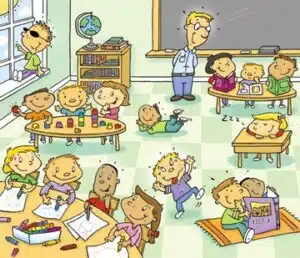What is creativity?
Creativity, according to dictionary.com, is “the use of the imagination or original ideas, especially in the production of an artistic work”. Creative people are generally described as people who are good at coming up with new ideas, generating novel solutions and in general thinking “outside of the box”. When one thinks of creative, the artists of the world, the inventors and the storytellers and entertainers come to mind.
Are people with ADHD more creative?
A link between ADHD and creativity exists as many studies on children and adults with ADHD have found a relationship between the two. People with ADHD tend to think in more creative ways compared to individuals without ADHD.
One study, with one group of children with ADHD and another group children without ADHD, investigated their ability to problem solve. Children with ADHD were found to score higher across multiple subsets of creativity including coming up with the most number of solutions and coming up with the most original solutions. This means that after being shown a problem, the children with ADHD would have the most ideas on how to solve it and these ideas would be more unconventional and original than the other children’s’ ideas.
Children with ADHD are also found to be more successful at expressing their emotions and story telling (both facets related to creativity)
Why are people with ADHD more creative?
There are several hypotheses still being explored that are trying to piece together this relationship between creativity and individuals with ADHD.
One theory is that in people with ADHD, who experience delayed cognitive functioning, their prefrontal cortexes are more immature. The prefrontal cortex regulates thoughts and executive functioning, so when it is more immature, thoughts are less regulated. This allows people with ADHD to think in more flexible ways with fewer constraints. People with ADHD have fewer limits and restrictions on their ideas and this is why they can be more creative.
Another theory looks at genetic markers that people with ADHD tend to share. There are certain genes, which are said to promote novelty, that is found more often amongst individuals with ADHD.
Divergent vs Convergent Thinking
People with ADHD are said to be more divergent thinkers compared to people without ADHD who are better at convergent thinking. Divergent thinking refers to ‘thinking outside the box’ and coming up with creative solutions while convergent thinking refers to coming up with the correct answers.
People with ADHD tend to be effective in producing new ideas while people without ADHD are better able to clarify and expand on ideas.
Convergent thinking can refer to the ability to form associations between concepts and link together unrelated ideas while divergent thinking means altogether producing new concepts. As you may expect, convergent thinkers would be more successful at test taking, responding to teacher’s questions and following instructions in a school setting.
ADHD and Creativity in an Academic Setting
Many students with ADHD struggle more in academic settings compared to students without ADHD. Statistically, students with ADHD are more likely to fail subjects, feel discouraged when learning and drop out of school altogether compared to students without ADHD.
This is a pattern that does not need to continue. Children with ADHD are just as capable as any other student and in fact, they hone different strengths. Curriculum and teaching can be flexible to their needs and the creative ways in which their brains work. Many people with ADHD share the traits of high energy and creativity typically associated with gifted individuals without ADHD.
In the box, thinking is usually how teachers and educators look at learning but this leaves out all the out of the box thinkers, who play a necessary role in this world. We need the convergent thinkers but the divergent ones are just as important. Both ways of thinking complement each other extremely well and should be recognized by both parents and teachers.
Work Cited
Gonzalez-Carpio, G., Serrano, J. P., & Nieto, M. (2017). Creativity in Children with Attention Déficit Hyperactivity Disorder (ADHD). Psychology, 8(03), 319.
White, H. A., & Shah, P. (2006). Uninhibited imaginations: creativity in adults with attention-deficit/hyperactivity disorder. Personality and Individual Differences, 40(6), 1121-1131.


